After much anticipation, my seven year old son and I saw
the Two Towers on the Saturday before Christmas. My nine year old daughter watched it with my husband the night before in order to switch off with the little ones at home. A year ago I wouldn't have expected to be taking any of my children to see the movie (because of their age), but a lot has changed since then for us. John read the entire
Lord of the Rings aloud to the children over the past year. Jacinta read it, again, on her own. She and Matthew have also listened to the 13 disc BBC audio drama numerous times. They also very much enjoyed
the Fellowship of the Ring movie on the "small screen". The point is that they have really attained a decent grasp of the story. In addition, my son, who doesn't like loud noises much, wore earplugs (which diminishes the intensity quite a bit) and my husband and I both did a bit of editing by simply covering their eyes with our hands. This was necessary during the previews and commercials before the movie more than for the movie itself.
Two of the toughest characters to portray - Gollum and Treebeard - were absolutely amazing. Gollum is a complex character - tortured by his desire for the ring, whom you don't know whether to hate or pity. A computer graphics generated character, he was entirely believable and pathetic in the way, I think, Tolkien intended him to be imagined. Treebeard could so easily have been a silly cartoonish character. While not without humor, he's also magnificent and ...respectable in the way that one would appreciate and admire an older gentleman who's a bit eccentric.
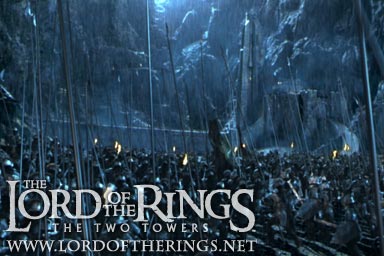
There are several general things that I think remarkable about this phenomenal task of creating movies from Tolkien's beloved stories. (For those who really like movies, as my husband and I do, the
Fellowship of the Ring DVD is interesting partly because of the extensive commentaries, interviews, photo galleries, etc. which provide details on both how the movies were made and what the movie-makers were trying to do.) Many of the people most intimately involved in the movie production have read the story countless times. Faithfulness to Tolkien was a major priority for them. They have referred to the books over and over again, not just in writing the screenplay, but in how the actors portray their parts. A great deal of attention and thought has gone into many, many details of the story. For example, recordings exist of Tolkien himself reading parts of his stories. Ian McKellan, who plays Gandalf, based his portrayal of Gandalf, in voice tone and expression, on these recordings. Christopher Lee, who plays Saruman, has read the books every year for decades. In addition to his excellent portrayal of the villain, he discussed parts of the book with the other actors to be sure that certain details weren't left out. The two artists most famous for illustrating editions of
the Lord of the Rings, Alan Lee and John Howe, worked as art consultants on the sets and miniatures. Peter Jackson, the director, collaborated with hundreds of cast members, production members and Tolkien fans to fine tune the script and the ideas. We had a local news story here in Wisconsin about a man who was, as a hobby, an expert in Tolkien's fictional languages. He offered his services to Peter Jackson and was invited to play a part in the production. I've never heard of any project done in this kind of fashion and the final result is truly reflective of the incredible effort and labor of love that went into making these movies.
Jackson and crew did a great job of balancing this rather dark, middle part of the story with some enjoyable comic relief (especially found in the character of Gimli the dwarf) which flowed quite well. I thought there were a few more unnecessary plot-deviations than in the first movie (particularly a significant thread involving Aragorn), but this annoyance was rather minor. We enjoyed the movie very much and look forward to its conclusion,
The Lord of the Rings: Return of the King, coming out in December 2003.

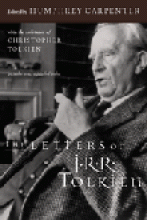
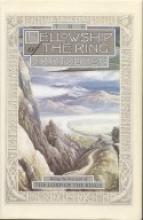
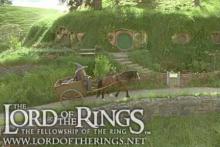
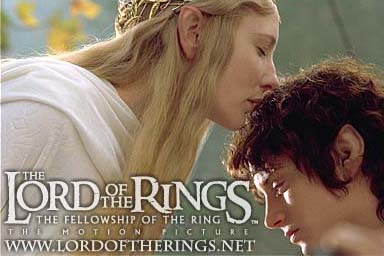 Although I think that watching the movie will lead many people to pick up the book, I think it best to read the book before seeing the movie so that one's first impressions in the imagination come directly from the book rather than another's re-creation of it. Parents, in particular, might do well to read the book before seeing the movie because, particularly if they aren't regular movie-goers, I think the violence and intensity wouldn't make much sense without being familiar with the plot and themes.
Although I think that watching the movie will lead many people to pick up the book, I think it best to read the book before seeing the movie so that one's first impressions in the imagination come directly from the book rather than another's re-creation of it. Parents, in particular, might do well to read the book before seeing the movie because, particularly if they aren't regular movie-goers, I think the violence and intensity wouldn't make much sense without being familiar with the plot and themes.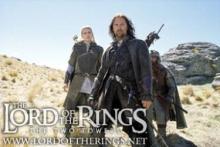
 There are several general things that I think remarkable about this phenomenal task of creating movies from Tolkien's beloved stories. (For those who really like movies, as my husband and I do, the Fellowship of the Ring DVD is interesting partly because of the extensive commentaries, interviews, photo galleries, etc. which provide details on both how the movies were made and what the movie-makers were trying to do.) Many of the people most intimately involved in the movie production have read the story countless times. Faithfulness to Tolkien was a major priority for them. They have referred to the books over and over again, not just in writing the screenplay, but in how the actors portray their parts. A great deal of attention and thought has gone into many, many details of the story. For example, recordings exist of Tolkien himself reading parts of his stories. Ian McKellan, who plays Gandalf, based his portrayal of Gandalf, in voice tone and expression, on these recordings. Christopher Lee, who plays Saruman, has read the books every year for decades. In addition to his excellent portrayal of the villain, he discussed parts of the book with the other actors to be sure that certain details weren't left out. The two artists most famous for illustrating editions of the Lord of the Rings, Alan Lee and John Howe, worked as art consultants on the sets and miniatures. Peter Jackson, the director, collaborated with hundreds of cast members, production members and Tolkien fans to fine tune the script and the ideas. We had a local news story here in Wisconsin about a man who was, as a hobby, an expert in Tolkien's fictional languages. He offered his services to Peter Jackson and was invited to play a part in the production. I've never heard of any project done in this kind of fashion and the final result is truly reflective of the incredible effort and labor of love that went into making these movies.
There are several general things that I think remarkable about this phenomenal task of creating movies from Tolkien's beloved stories. (For those who really like movies, as my husband and I do, the Fellowship of the Ring DVD is interesting partly because of the extensive commentaries, interviews, photo galleries, etc. which provide details on both how the movies were made and what the movie-makers were trying to do.) Many of the people most intimately involved in the movie production have read the story countless times. Faithfulness to Tolkien was a major priority for them. They have referred to the books over and over again, not just in writing the screenplay, but in how the actors portray their parts. A great deal of attention and thought has gone into many, many details of the story. For example, recordings exist of Tolkien himself reading parts of his stories. Ian McKellan, who plays Gandalf, based his portrayal of Gandalf, in voice tone and expression, on these recordings. Christopher Lee, who plays Saruman, has read the books every year for decades. In addition to his excellent portrayal of the villain, he discussed parts of the book with the other actors to be sure that certain details weren't left out. The two artists most famous for illustrating editions of the Lord of the Rings, Alan Lee and John Howe, worked as art consultants on the sets and miniatures. Peter Jackson, the director, collaborated with hundreds of cast members, production members and Tolkien fans to fine tune the script and the ideas. We had a local news story here in Wisconsin about a man who was, as a hobby, an expert in Tolkien's fictional languages. He offered his services to Peter Jackson and was invited to play a part in the production. I've never heard of any project done in this kind of fashion and the final result is truly reflective of the incredible effort and labor of love that went into making these movies.